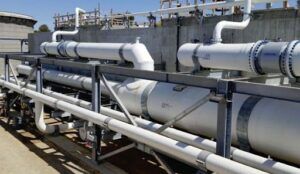Introduction
Pressure drop in fluid pipelines refers to the decrease in fluid pressure along the flow path. This pressure reduction is caused by various factors, including fluid friction against the pipe wall, sudden changes in pipe diameter, the presence of fittings and valves, and changes in elevation.
Primary Causes of Pressure Drop
- Frictional pressure drop: This type of pressure drop is caused by friction between the fluid and the inner wall of the pipe. It is influenced by factors such as fluid viscosity, flow rate, pipe diameter, and the roughness of the inner pipe surface.
- Local pressure drop: This type of pressure drop occurs due to sudden changes in pipe geometry, such as bends, tees, valves, and fittings. These changes cause turbulence in the fluid flow, resulting in increased pressure drop.
- Elevation pressure drop: In sloped pipelines, gravity causes a pressure drop or increase. If the fluid flows upward, the pressure decreases, and if it flows downward, the pressure increases.
Factors Affecting Pressure Drop
- Fluid viscosity: Higher fluid viscosity increases friction between the fluid and the pipe wall, resulting in a higher pressure drop.
- Flow rate: As the flow rate increases, so does the pressure drop.
- Pipe diameter: Increasing the pipe diameter reduces the pressure drop.
- Internal pipe roughness: A rougher inner pipe surface increases friction and, consequently, the pressure drop.
- Pipe length: Longer pipes result in higher pressure drops.
- Fluid density: Fluid density also affects pressure drop.
- Temperature: Temperature changes can affect fluid viscosity and, consequently, pressure drop.
Calculating Pressure Drop
Various equations and formulas are used to calculate pressure drop in pipelines, depending on the fluid type, flow regime (laminar or turbulent), and pipe geometry. One such equation is the Darcy-Weisbach equation.
Pressure Drop Modeling in Pipelines
Understanding the pressure drop of a fluid within a pipeline is a critical consideration in the design and construction of pipeline systems. Key factors influencing pressure drop include pipeline length and reservoir pressure. Artificial intelligence-based methods offer the capability to predict the behavior of implemented systems under various conditions. This project investigates the impact of different parameters on pressure drop in pipelines using the COMSOL Multiphysics software.



